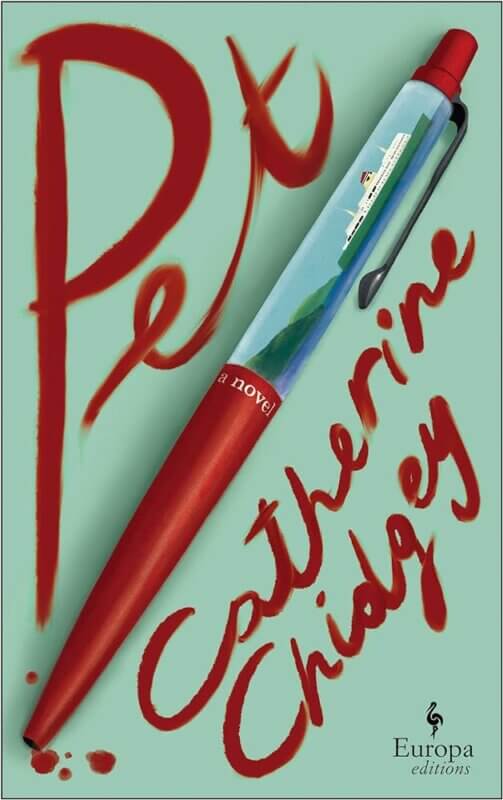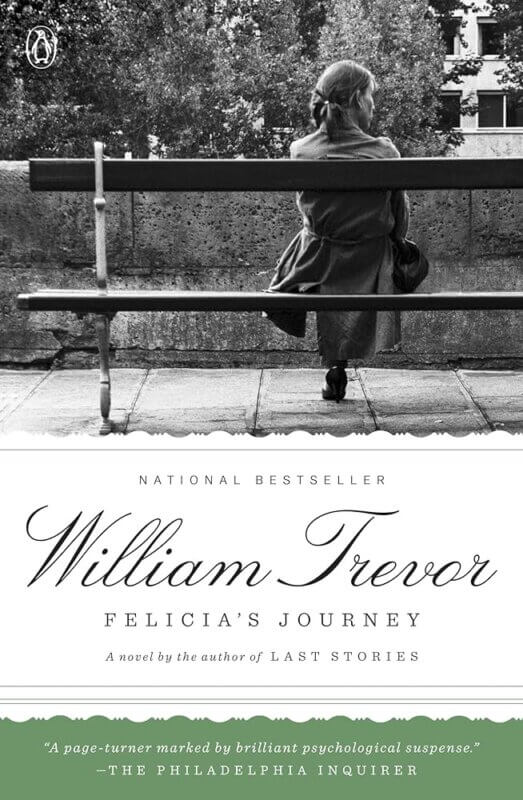Books with touch of creepy
Mrs. Price brought treats to school like Russian fudge. “If we were good,” Justine the narrator explains, “she said, there’d be more treats, because good things happened to good people. And every boy and girl had sat up straight then, and nodded, and listened, and spoken when it was their turn to speak, not just because of the good things in the future, the treats, but because they wanted to please her. She was new to town … and younger than our parents, and prettier than our mothers. … She made us feel special just by the way she looked at us, as if we had something important to say and she couldn’t wait to hear it. Often, she’d rest a hand on our shoulder like an old friend, then lean in and listen. Laugh when we wanted her to laugh. … If we came to school with a new haircut we really weren’t sure about, she’d put her hands on her hips and say, ‘Look out, David Bowie!’ or ‘Christie Brinkley, eat your heart out!’”
Sounds innocent enough, right? One of those rare gems of a teacher that kids love, look up to and want to please, who seems to genuinely appreciate and be interested in her students. What’s not to like? But hold on, because, in this story, things get pretty out of control and weird.
“Pet,” by Catherine Chidgey, is set in New Zealand in 1980 and 2014. In 1980, Justine is a 12-year-old enrolled in a Catholic primary school. In 2014, she is a grown-up mother of a daughter and caretaker to an elderly father, who we meet at the beginning of the novel being led to his recliner in an assisted living home, his skin pink, his face freshly shaved, freshly showered. The nurse who is helping him reminds Justine of someone, and she asks her father if the woman reminds him of anyone too. “I don’t know what you’re getting at,” he says, and goes back to his newspaper.

Later, we find out more about who Justine was remembering.
And thus, we are ushered into this odd, mysterious, unsettling and utterly enjoyable novel, which, second chapter in, takes us from the 21st century back to Justine as a child, lying on her stomach in the late afternoon, running her fingers through “the straw-dry grass.” Then comes a twinge in her temple, an odd feeling that her head is “high and hollow,” a taste of burnt sugar in her mouth.
The world suddenly seems distorted, her own hands strange to her, the garden strange also. Later, we learn she was having a seizure. And, as Ruth Franklin writes in The New York Times Book Review, “The unresolvable question of what Justine may do while experiencing a seizure — and what she does or does not remember afterward — is fundamental to the novel’s web of uncertainty.”
It is a fascinating lead-in to a fascinating tale, which I suppose one would call a psychological (or intellectual) thriller, though I have to say I didn’t see the “thriller” theme coming for some time. It is there, though, woven quite subtly into what at first appears more of a coming-of-age story about a young girl with an iconic teacher, a sweet best friend, a nice dad and no mother. But when things start going missing from the classroom — including a pen that Justine loves because it was a gift from her mother, who died of cancer — a more sinister strain is introduced, and things go from relatively sunny to increasingly dark and twisted. Justine is the narrator of this increasingly haunted tale, and it is through her eyes, her apprehension, and her morality and decision making (as child and as adult) that we experience the story.
This is not Chidgey’s first novel. She’s written at least six before for adults and several for children. Her work has won several awards. Her first book, “In a Fishbone Church,” won Best First Book at the New Zealand book awards, as well as the Commonwealth Writers’ Prize (Asia-Pacific region). Her second novel, “Golden Deeds,” was a Best Book in the LA Times Book Review, as well as a Notable Book in the New York Times Book Review. And that’s just to name a few of the many honors this author has received. Chidgey was born in Auckland and grew up in the Hutt Valley. She has explained that the 13 years that elapsed between her third and fourth novels were due to infertility issues that prevented her from writing. Happily, she and her husband had a daughter in 2015.
I was recently in Florida for a brief visit with my daughter, and the day we were to fly back north, I realized I was close to finishing the book I had brought with me on the trip. Lucky for me, my father was a big reader and an avid collector of books, so I didn’t panic (I cannot imagine getting on an airplane without a book), pretty sure that one of his many crowded shelves would yield something to get me home. In his study, I found a slim paperback volume I figured would take up close to zero space in my backpack and add minimal pounds to my burden. It had a much-read, well-loved look; creased, torn and a little the worse for wear. Perfect. At some point, the cover must’ve come loose because someone had painstakingly repaired it with now slightly yellowed wide cellophane tape. “Felicia’s Journey,” by William Trevor.
I had heard of William Trevor and vaguely recalled having read something he’d written. I half remember my father speaking well of his work. He was quite prolific: 13 novels, several short stories, a play and two non-fiction books — many of which have received awards, including the prestigious David Cohen Literature Prize in recognition of a lifetime’s literary achievement. Trevor was knighted in 2002 for his services to literature.
Born in 1928, in Mitchelstown, County Cork, Ireland, initially named William Trevor Cox, he died in 2016 at the age of 88. As a child, he moved a great deal around southern Ireland. His father was a bank manager frequently transferred from place to place. Trevor’s parents’ marriage was apparently not a happy one, which some critics believe explains “some of the more scarifying confrontations and silences” among his characters (Peter Porter, The Guardian).

“Felicia’s Journey” (published in 1994) blew me away. I will treasure this battered, taped-up, kind-of-stolen copy forever. It begins, “She keeps being sick. A woman in the washroom says: ‘You’d be better off in the fresh air. Wouldn’t you go up on the deck?’ It’s cold on the deck and the wind hurt her ears. When she has been sick over the rail she feels better and goes downstairs again, to where she was sitting before she went to the washroom. The clothes she picked out for her journey are in two green carrier bags; the money is in her handbag.”
Where is this woman going? And why is she sick? Well, it turns out she is pregnant (not just seasick) and has left home, having left behind a note for her family, which consists of a father, a bunch of brothers and a grandmother (maybe even great-grandmother), who has managed to outlive just about every other female in the family. Like “Pet,” “Felicia’s Journey” begins rather straight-forwardly. Rather poignantly, rather sadly. A bit like Justine, in “Pet,” there is a loneliness about the young woman, Felicia, who we learn has left the small Irish town she comes from to search in England for the father of her unborn child.
Initially, she makes a number of encounters with more-or-less well-meaning people (did I mention she doesn’t have much money?), determined to find this Johnny Lysaght person (did I mention she doesn’t have an address for the guy?). It is a difficult and worrisome situation, for sure, and Felicia is vulnerable and rather naive. And then, a bit like “Pet” (which this novel is not like in almost any other way), things get creepy, and then creepier, starting when Felicia crosses paths with a fat middle-aged man named Mr. Hilditch, who seems pleasant, innocent and helpful enough at first, but … well, just read on.
The writing in this novel is exquisite. Beautiful. Skilled and subtle and poignant and descriptive and utterly unique, with an interesting, unusual, rather inspired ending. I found it riveting. “A thriller lifted to the level of high art,” says Publisher’s Weekly. It won the Whitbread Fiction Prize. And as with the novel, “Pet,” I didn’t see the creep factor coming.
So, don’t pass Go. Get these two books and read them. And while you are at it, check out “A Guest in the House,” a pop-off-the-page brilliant graphic horror novel by Emily Carroll about an uncomplicated, well-meaning, recently married woman who becomes haunted by the presence of her new husband’s ex-wife, Sheila. Yikes. And wow. Brilliant visuals in which somehow the two-dimensional page becomes multi-dimensional, in your face and unsettlingly immediate. Crazy good. Great juxtaposition of the commonplace with the nightmare/horror/paranormal. I want to say more about this but have run out of words and time.
Enjoy!

